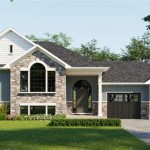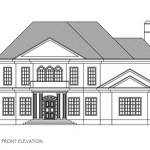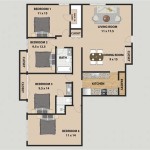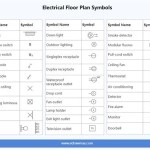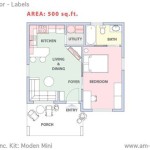Building a 3D Floor Plan App in Android Studio Using CodeHS: A Comprehensive Guide
The creation of a 3D floor plan app using Android Studio and the CodeHS platform presents a rewarding and educational opportunity for budding developers. This article will provide a detailed walkthrough of the process, outlining the key steps involved, including setting up the development environment, leveraging the power of CodeHS, and incorporating 3D rendering functionalities.
Setting Up the Android Studio Environment
First, it is essential to establish a solid development environment. This involves installing and configuring Android Studio, a powerful IDE built for Android app development. Download the latest version of Android Studio from the official website, ensuring compatibility with your operating system. Once installed, launch Android Studio and follow the initial setup wizard. This includes selecting the appropriate SDK platforms, creating a new project, and setting up the necessary dependencies.
The Android Studio project will serve as the foundation for your 3D floor plan app. Create a new project using the "Empty Compose Activity" template. This template provides a basic structure, including an Activity class and a Compose layout. In the activity class, you will implement the logic for handling user interactions and data management. The Compose layout will be responsible for defining the visual structure and elements of your app, including the 3D floor plan view.
Integrating CodeHS for Interactive Learning
To enhance your learning experience and expedite the development process, consider leveraging the capabilities of CodeHS. CodeHS is an educational platform that provides interactive coding exercises and lessons, making it an ideal complement to your Android Studio workflow. Create a CodeHS account and explore the available courses, particularly those focused on Android development and 3D graphics.
By incorporating CodeHS lessons into your app development process, you can gain valuable insights into core concepts. For example, CodeHS can help you understand the fundamentals of 3D rendering, such as object creation, material properties, and lighting. It can also provide practical guidance on incorporating user input and gestures into your app, allowing users to interact with the 3D floor plan.
Implementing 3D Floor Plan Rendering
The core functionality of your app revolves around rendering the 3D floor plan. To achieve this, you will need to utilize a 3D graphics library. Several options are available, such as OpenGL ES, a powerful API specifically designed for mobile graphics, and libraries like Sceneform, which simplifies 3D rendering in Android.
Choose a library that aligns with your desired level of control and complexity. Once you have selected a library, consult its documentation to understand its features and functionalities. You will need to implement code that defines the geometry, materials, and lighting of your floor plan. This involves creating objects, defining their positions and orientations, assigning colors and textures, and setting up lighting sources.
After you implement the 3D rendering, you can add interactive features to your app. Allow users to manipulate the camera and explore the floor plan. You can also integrate other user interactions, such as gestures, touch events, and buttons, to provide a more engaging user experience.
Enhancing User Experience
Beyond the core functionality, focus on enhancing user experience through design considerations and features. Implement intuitive navigation and controls, allowing users to easily explore the floor plan. You can also incorporate features that improve accessibility, such as zoom in/out functionality, allowing users with visual impairments to better navigate the app.
Consider adding features that provide additional information about the floor plan. For example, you could include a legend that explains the meaning of different colors or symbols, or you could display details about individual rooms or objects when the user interacts with them. This not only enhances the user experience but also makes the app more valuable to users.
By carefully crafting the user interface and implementing relevant features, you can ensure that your 3D floor plan app is not only functional but also enjoyable and informative. Keep in mind that the success of any app depends on meeting user needs and exceeding expectations.

Error Handling Im Doing A Javascript Codehs Course But What Am I Wrong Stack Overflow

Error Handling Im Doing A Javascript Codehs Course But What Am I Wrong Stack Overflow

Python 2 7 Really Weird Issue With Codehs Stack Overflow

Html Background Size Causing To Disappear On Mobile Stack Overflow

Codehs And Khanacademy Diffe Use Of Javascript Stack Overflow

C Missing Partial Modifier On Declaration Of Type X Cause By Auto Generated Code Designer Stack Overflow

Visual Studio Code How To Compare Cur Working Tree File With Last Previous Version Git Or Local History Stack Overflow

Python Type Error In This Code For My Ingredient Multiplier Stack Overflow
Bookmars Bookmarks 16 9 Html At Master Artiny Github

The Joy Of Live Coding Codepen Repls Toplap Alive And More Scott Hanselman S Blog

